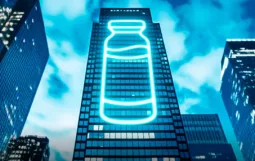Supply & demand: fighting falsified medicines on two fronts
As falsified medicines are debated this week at the World Health Assembly,
IFPMA shares what the biopharmaceutical is doing to combat this risk to individual and public health.
If there’s one place not to take a gamble, it’s on whether or not a medicine is real or falsified. Yet in the last weeks alone we’ve seen headlines pop up across the world as authorities uncover fakes posing as treatments for everything from malaria and cancer to common infections and anxiety disorders. Due to the criminal nature of this business, it is not easy to know the real size of this problem. What we can be sure of is that what we see in the headlines is only the tip of the iceberg.
People take medicines to treat an illness, to relieve suffering and protect themselves and their loved ones against disease and disability in the future. A falsified medicine cheats patients as they might not contain the right active pharmaceutical ingredients (APIs), or the correct dose. Even worse, the ingredients used could have no therapeutic benefits at all, or could even be toxic.
Quite the opposite of “it does what it says on the box”, with falsified medicines, you never know what you’re getting.
 |
 |
|
Picture courtesy of Pfizer Inc. Sterile labs to manufacture genuine pharmaceuticals. |
Picture courtesy of PSI. Operation Cross Ocean, China uncover falsified medicines manufacturing. |
So what’s being done, and what can we do better?
The recent Pharmaceuticals, Policy and Law journal, “The Globalization of the Pharmaceutical Industry”, explains that to put an end to the spread of dangerous falsified medicines, we need to tackle the problem on two fronts[1].
On the supply side, the pharmaceutical industry is working to prevent and detect falsified products through technologies like serialization, holograms, special paper and inks, tamper resistant labels, and closures. Thanks to these technologies, patients, pharmacists and health care professionals are alerted to the fact a package has previously been opened and potentially tampered with. Technologies such as these also allow actors involved in the supply chain to identify a falsified medicinal product before it even reaches the patient.
Data sharing and cooperation within the industry adds depth to collective understanding of the scope of this problem. Much of this is managed by the Pharmaceutical Security Institute (PSI), which gathers information and intelligence on falsified medicines in circulation around the world. The Institute maintains a database to which pharmaceutical companies report cases of falsified medical products, and facilitates reporting to national authorities.
Measuring the true scope of the problem, however, remains a challenge. What’s clear, is that improvements in surveillance, including detection of security breaches, data collection, analysis, and dissemination are urgently needed.
Steps are also being taken at national and international levels to make sure criminals get more than a mere “slap on the wrist” for making and smuggling falsified medicines that put people’s lives in danger. After all, these people are criminals who intentionally deceive patients in order to line their own pockets, giving no thought to the patients’ lives they are putting at risk. Concocting and selling falsified medicines is a very lucrative market but unfortunately the penalties incurred by counterfeiters, if caught, are low in many countries. In some cases, counterfeiters may only pay a small fine or simply spend a short while in jail. Clearly, this is not proportional to the threat and physical and mental hurt these criminals cause patients and their families. This is why we need strong legislative frameworks and strict enforcement to put an end to this criminal activity. In February, Burkina Faso became the latest country to sign the MEDICRIME Convention, the first binding legal instrument which makes counterfeiting of medical products a crime and that allows for cooperation against this threat across national borders. We need more countries to set up the legal framework to disrupt counterfeiters and keep patients safe from harm.
As for the demand side of the issue, raising awareness among patients and the general public, is also key. Though strong regulatory systems are needed to ensure that people around the world have timely access to quality medicines and vaccines that are both effective and safe, today, fewer than 1 in 5 countries have well developed pharmaceutical regulatory systems. This means everybody needs to be vigilant.
One of the biggest obstacles to overcoming the issue of falsified medicines is that many people are simply not aware of what they are and what risks they pose. There are plenty of people who simply do not recognize the dangers of purchasing medicines off the street or on the Internet instead of using a licensed pharmacy. They may not even realize that experiencing unusual reactions to a medicine they have taken many times before may be the result of a dodgy product.
We’re very proud to collaborate with organizations from all around the world on the Fight the Fakes campaign, creating a global movement of people speaking up about falsified medicines. Effective communications to dispel myths and empower people to identify red flags will help us get one step closer to the certainty that in each case, our medicines are safe, effective, and for the good of human health.
Cyntia Genolet is Regulatory and Health Policy Manager at IFPMA, responsible for the anti-counterfeiting portfolio. Cyntia also works on policy issues related to biotherapeutic and regulatory domains. If you want to know more on how the industry fights the scourge of falsified medicines, read this interesting piece from colleagues and visit our brand new webpage that gives an overview of our industry’s activities to fight falsified medicines.
[1] Counterfeit medicines: Threat to patient health and safety.
Author



